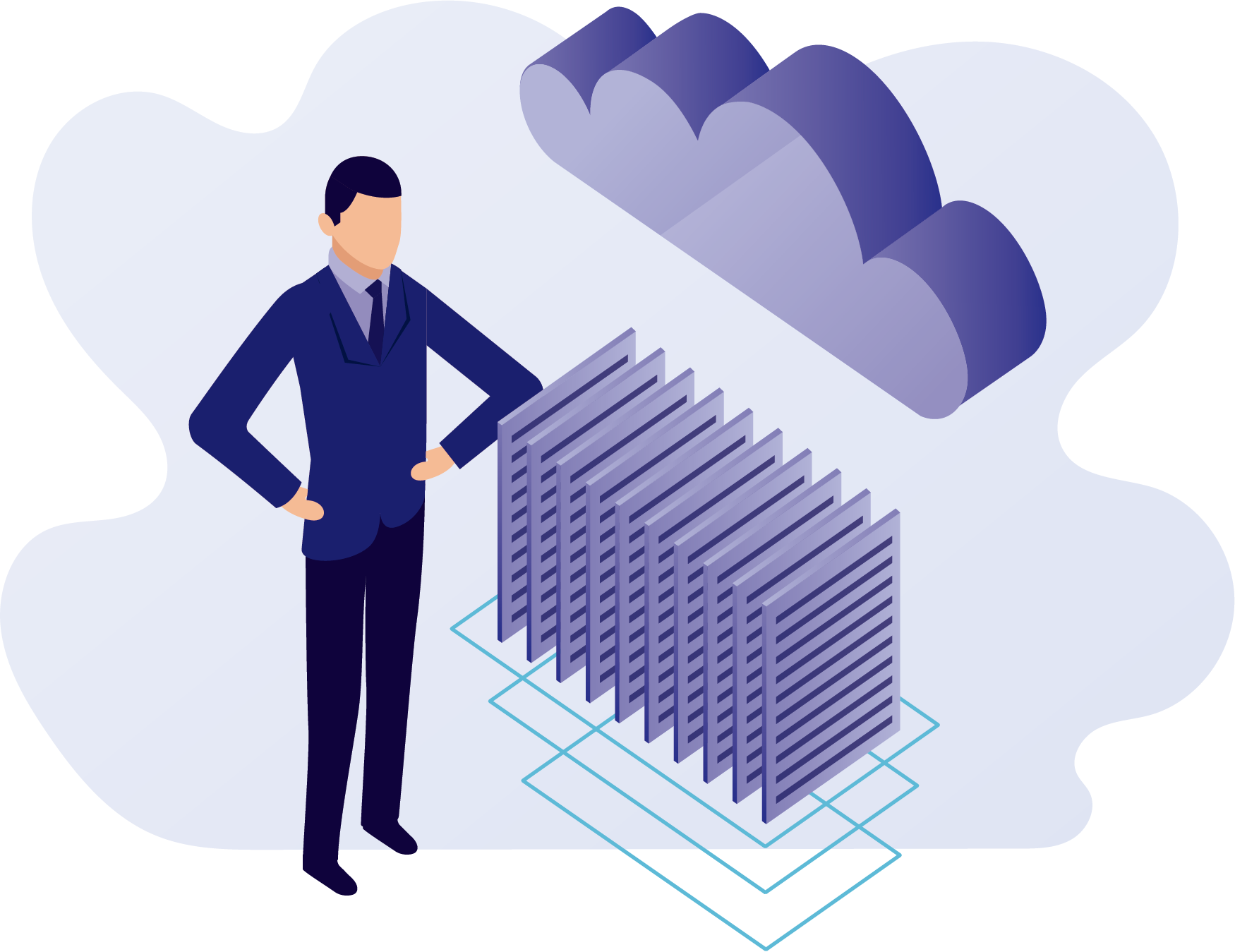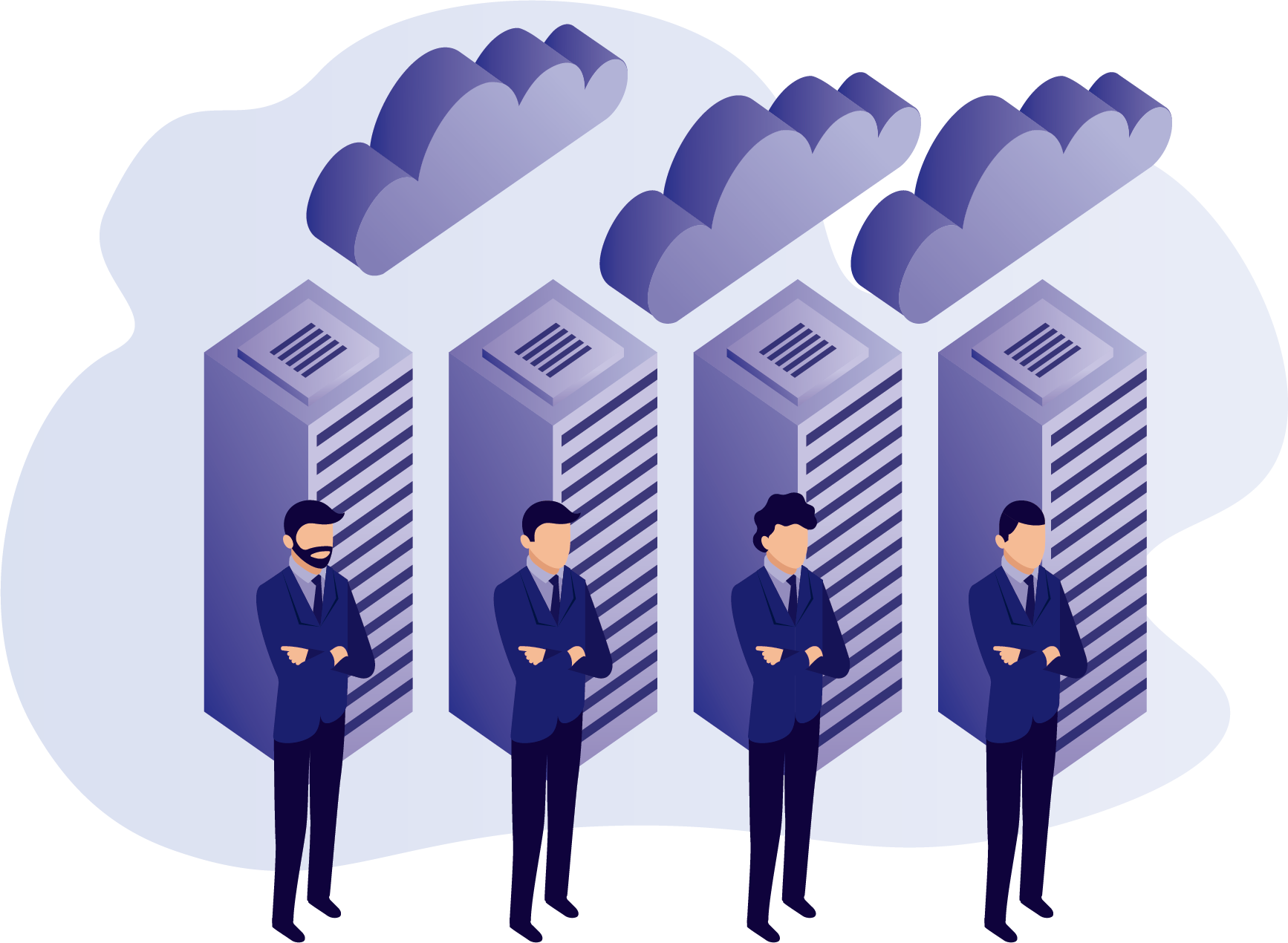
Cloud Adoption Services.
Cloud adoption is the act of moving traditional on-premises computing services or facilities to cloud-based or remote infrastructure. In most cases, it’s a gradual and complex process to ensure no downtime for the organization. This can be a cost-effective way to manage computing power as a business grows.
VTC can help you adopt Cloud Services in a very cost effective manner while keeping your recurring cost at a very controlled manner

Why is Cloud Adoption Important?
Cloud adoption framework is the process of using cloud technologies to improve the way you do business. It can involve moving your entire business to the cloud or simply using cloud-based tools to supplement your existing infrastructure.
There are many reasons to consider adopting cloud technologies. The most common benefits include improved efficiency, flexibility and scalability. In addition, the pay-as-you-go model of many cloud services can save you money on upfront costs and help you better manage your resources.
There are a few different ways to approach cloud adoption. You can choose to move your entire infrastructure to the cloud, or use a hybrid approach that combines on-premises and cloud-based solutions. The best approach for your business will depend on your specific needs and goals.
How Cloud Computing benefits your company
Cost Saving
Scalability
Flexibility
Disaster Recovery & Security
With a pay-as-you-go model, you only need to pay for the resources you use, which can save your business money. In addition, you can avoid the upfront costs associated with traditional on-premise solutions.
Cloud solutions are highly scalable, meaning they can easily be scaled up or down to meet your changing needs. This can be a major advantage over traditional on-premise solutions, which can often be difficult and expensive to scale.
Cloud solutions offer a high degree of flexibility, allowing organisations to customize them to meet your specific needs. This includes the ability to add or remove features as needed, and to change service providers if necessary.
Cloud providers provide good DR options which otherwise would be difficult for companies to build.
With a well-designed cloud solution, your data will be stored safely off-site and backed up regularly. In addition, you’ll have access to the latest security features and technologies to help protect your data from threats.
Cloud Infrastructure Design
Cloud infrastructure design is the process of planning and building the foundational components that enable the operation of applications and services in a cloud environment. This encompasses choosing the right cloud service models, computing resources, networking setup, security, storage, and monitoring tools. It’s essential for ensuring scalability, reliability, cost-effectiveness, and performance optimization of the infrastructure.


Cloud Migration
Cloud migration refers to the process of moving data, applications, or other business elements from an organization’s on-premises infrastructure or from one cloud environment to another. This move is typically aimed at leveraging the flexibility, scalability, and cost-efficiency of the cloud, which offers a wide range of services, including compute power, storage, and networking.
Cloud migration can be a complex process requiring careful planning, assessment, and execution to ensure minimal downtime, data loss, and optimal integration with cloud resources
Cloud Security
Cloud security refers to the measures and technologies employed to protect cloud-based systems, applications, and data from potential threats and vulnerabilities.
Key Components of Cloud Security include:
· Data Protection
· Identity and Access Management
· Network Security
· Application Security
· Compliance and Governance


Managed Cloud Solutions
Managed Cloud Solutions refer to a range of services where a third-party provider manages, operates, and maintains cloud infrastructure and applications on behalf of an organization. These services help businesses offload the complexities of cloud management, allowing them to focus on their core operations.
Managed cloud solutions are ideal for businesses that want to leverage the benefits of cloud computing without having to manage the complexities of cloud infrastructure on their own. This approach enhances efficiency, security, and scalability while reducing the burden on internal IT teams.
Let Us help you.
Frequently Asked Question
Cloud adoption works by moving critical computing services, applications, and/or stored data to remote, cloud-based servers. These cloud-based servers can be private or shared, and are often a cost-effective way to manage compute power as a company grows. Once the data and apps are set up in the cloud, they are accessed through an internet-connected browser.
Cloud adoption can be beneficial for companies or organizations of any size. For smaller companies, it represents a cost-effective way to manage growth or recession without the cost of on-premises, hardware-based computing. For larger companies, cloud adoption also provides scalability benefits, as well as zero-downtime security for organizations that store sensitive consumer data.
The advantages of cloud computing are many, and they affect nearly every major pillar of an organization.
• For the IT department, cloud adoption allows for constant software updates with little to no downtime, and robust security services that protect the sensitive data of both the organization and its customers.
• For the operations and procurement teams, cloud adoption represents significant cost savings as the services are most often pay-as-you-go and scalable as the company sees increased or decreased profits.
• For the management team, cloud adoption provides the framework for collaboration across locations and hardware, making any employee and a wide variety of hardware devices part of the team.
• For the marketing team, cloud adoption provides the ability to cost-effectively increase computing power, which can open doors of AI-driven marketing efforts that increase personalization for their consumers and improve the overall customer experience.
One of the challenges of cloud adoption is the culture of the business that is moving forward with cloud-based services. Cloud services, like many other products, provide benefits regardless of how they’re purchased. However, bulk purchasing of services provides cost and process benefits beyond the baseline. Since many cloud and Platform-as-a-Service products are priced based on usage, a company with multiple decision-makers can find themselves in trouble if they’re not coordinating the adoption, allocation, projecting, and transformation processes. Cloud adoption provides cost savings in almost every instance, except when there’s a lack of coordination that results in redundant spending that negatively offsets the cost benefits.
In the event that your organization is not ready for full-scale cloud adoption, you have the choice to employ a hybrid cloud that offers many of the benefits of cloud services without the all-or-nothing commitment. VTC can help you to bring the cloud to your company, at your own pace.
VTC provides companies with the ability to modernize multigenerational IT for speed and flexibility. It brings scalability to all your traditional, cloud-native and/or mission-critical workloads, no matter where they reside.
A hybrid cloud model mixes traditional on-premises infrastructure with a public cloud service. This mixed-computing environment still presents many of the core befits of cloud adoption, and is the choice for organizations that prefer a gradual move from traditional architecture to cloud-based workflows. The hybrid architecture provides orchestration, management, and application portability, as you would get from full cloud adoption.
Services
Our Partners
Oddo
Oracle
Tally
Blog
Industry Insights
Regulatory Updates
Tech Trends